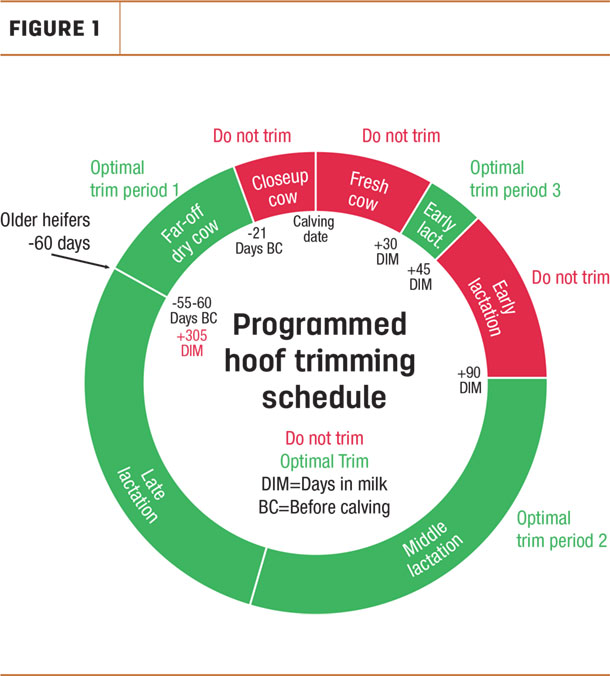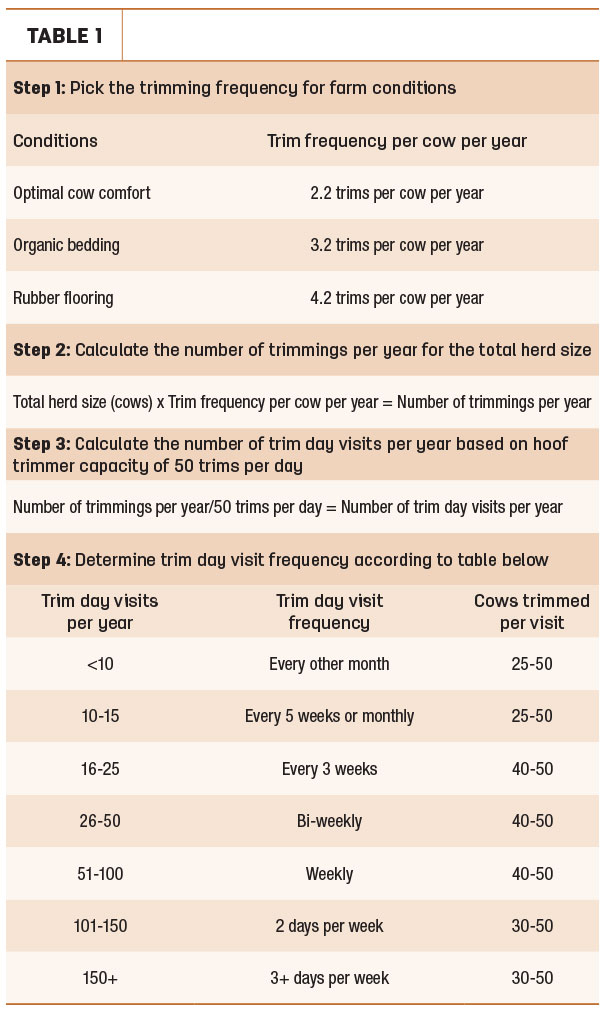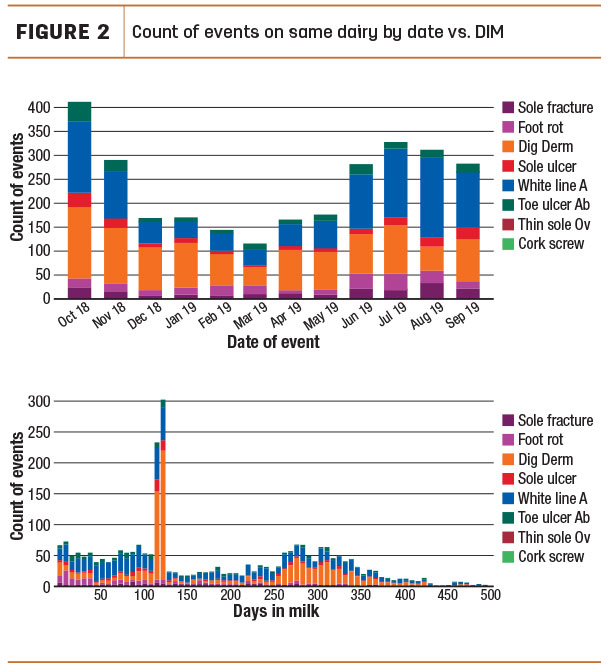To read this article in French, click here.
Lameness affects nearly 25% of dairy cows worldwide. Data from the last five years suggests that when lesions occur in first lactation or before, there is a high probability the same lesion will occur again in consecutive lactations.
This is due to permanent damage to underlying structures which occurs with each lameness episode. The damage done is irreversible. For this reason, it is imperative to have a timed hoof-trimming program focused on prevention and ensuring success. Consider five steps to help you achieve exactly that.
1. Avoid scheduled trimming in the high-risk periods where the impact on future health status or production may be compromised
It is imperative: 21 days prior to calving (close-up) and 21 days post-calving, no lameness is present. The transformations that occur during this period are due to hormonal fluctuations, enzyme alteration and social/environmental changes which impact transition and fresh cows. Cows with moderate or severe lameness during this timeframe have significantly altered the resting behavior associated with hypersensitivity from the pain.
In addition, early lactation lameness significantly decreased pregnancy rates and increased culling/death rates. Any deviation from this parameter can result in lameness onset 80 to 100 days later. Lameness prevention and treatments must be conducted before cows enter the close-up period. The last day a healthy cow should visit the hoof-trimming chute is 22 days before her due date.
2. Promote timed hoof trimming by determining optimal trim periods
Timed hoof trimming is the scheduled trimming of cows’ hooves for lameness prevention at the optimal times within her lactation. In addition, it is not trimming cows during stressful periods like the close-up (as stated before), fresh cow period, breeding phase and peak lactation. Every successful hoof health program starts with a scheduled trimming in the cows’ far-off dry period (60 to 22 days before calving) to prepare them for calving. The next scheduled trim should occur after peak production (120 to 180 days after first trim). Figure 1 shows a cow’s reproductive cycle and the time periods when trimming should or should not occur.

In some cases, we deal with certain environmental factors that require cows to have an additional assessment, or there may be high-maintenance cows within the herd. There is a small window of opportunity at 30 to 45 days in milk (DIM) to intervene in these instances.
3. Consider housing and management factors to determine trimming frequency
Cow comfort, seasonality, stocking density, flooring surfaces, walking distances and bedding type will dictate the frequency with which cows need to be evaluated for the need of hoof trimming. Hooves grow at a rate of 3/16-inch per month. Depending on the walking surface, walking distance and bedding type, wear of the horn may be equal to or more than what normal horn growth is. In such cases, assessing hooves too frequently increases the risk of overtrimming and additional lameness. Two assessments per year on large farms where steps are taken to control wear will be sufficient. If floor surfaces are slippery or in facilities where floors are covered with rubber, it may be required to assess and trim cows up to four times per lactation.
4. Use a simple calculation to determine trimming schedule
See Table 1

5. Evaluate hoof health data by DIM, date and lactation to determine lameness bottlenecks
Farm data will tell us if the current trimming schedule is preventing lameness, causing lameness or if the schedule has faults. Data could determine that fourth- and fifth-lactation cows or cows with previous-lactation lameness need a different schedule. The data from Figure 2 shows that this operation has success with the mid-lactation trimming, as there is a significant lesion reduction for the next four months.

The dry cow trim does not yield the same results, as white-line lesions are more prevalent during the first 120 DIM. The events by date graph displays that there are more claw horn lesions during the heat of the summer lingering into late fall. This would indicate that more focus must be put on lameness prevention during the dry period from June through September.
Conclusion
Lameness prevention is key for setting a cow up for success during her lactation. A timed hoof-trimming program is imperative for optimal hoof health and function throughout the entire herd. Various management factors have a direct impact on determining number of trims per year. Implementing a schedule based on these factors has proven most beneficial for hoof health and cow productivity.






